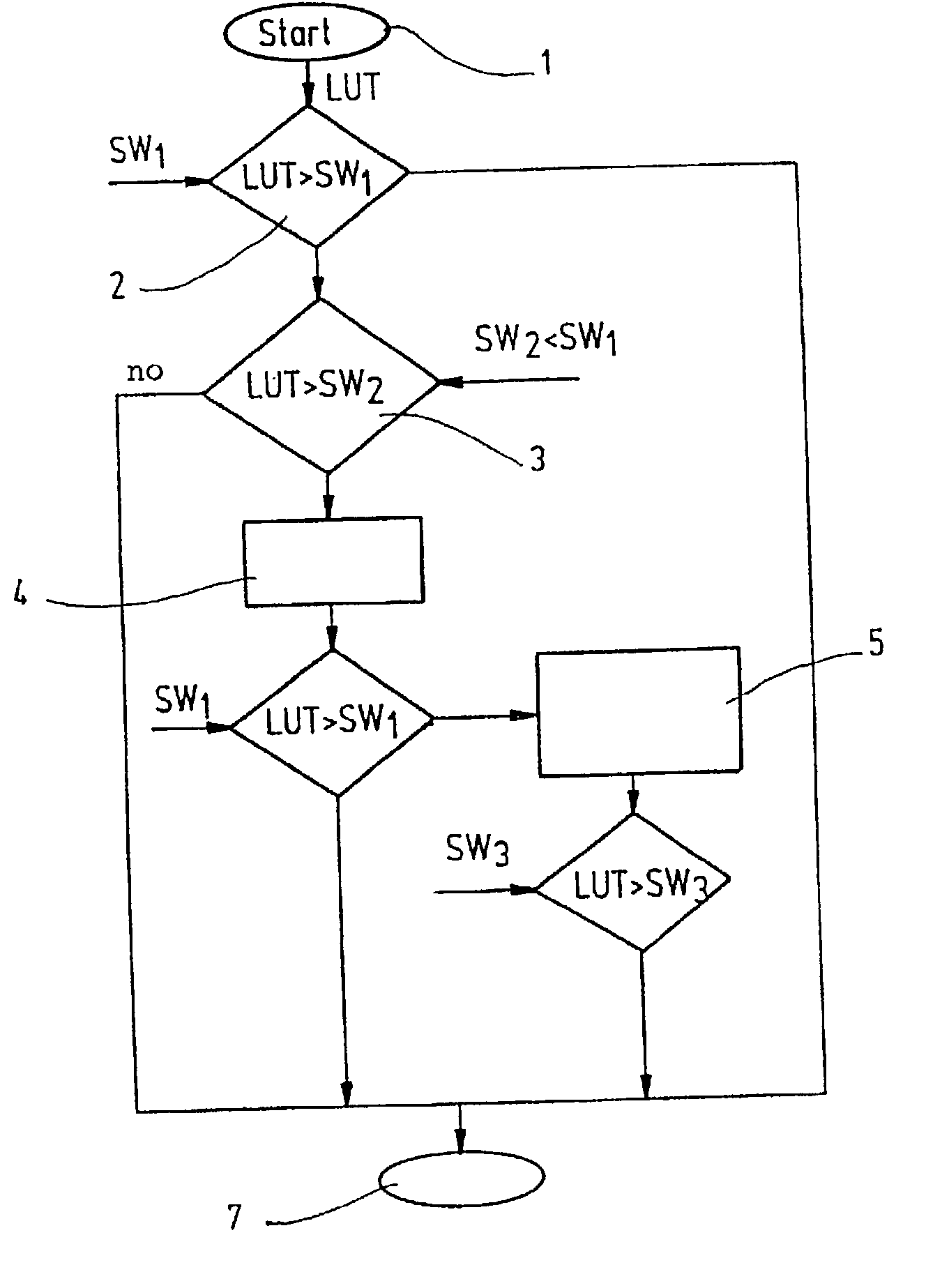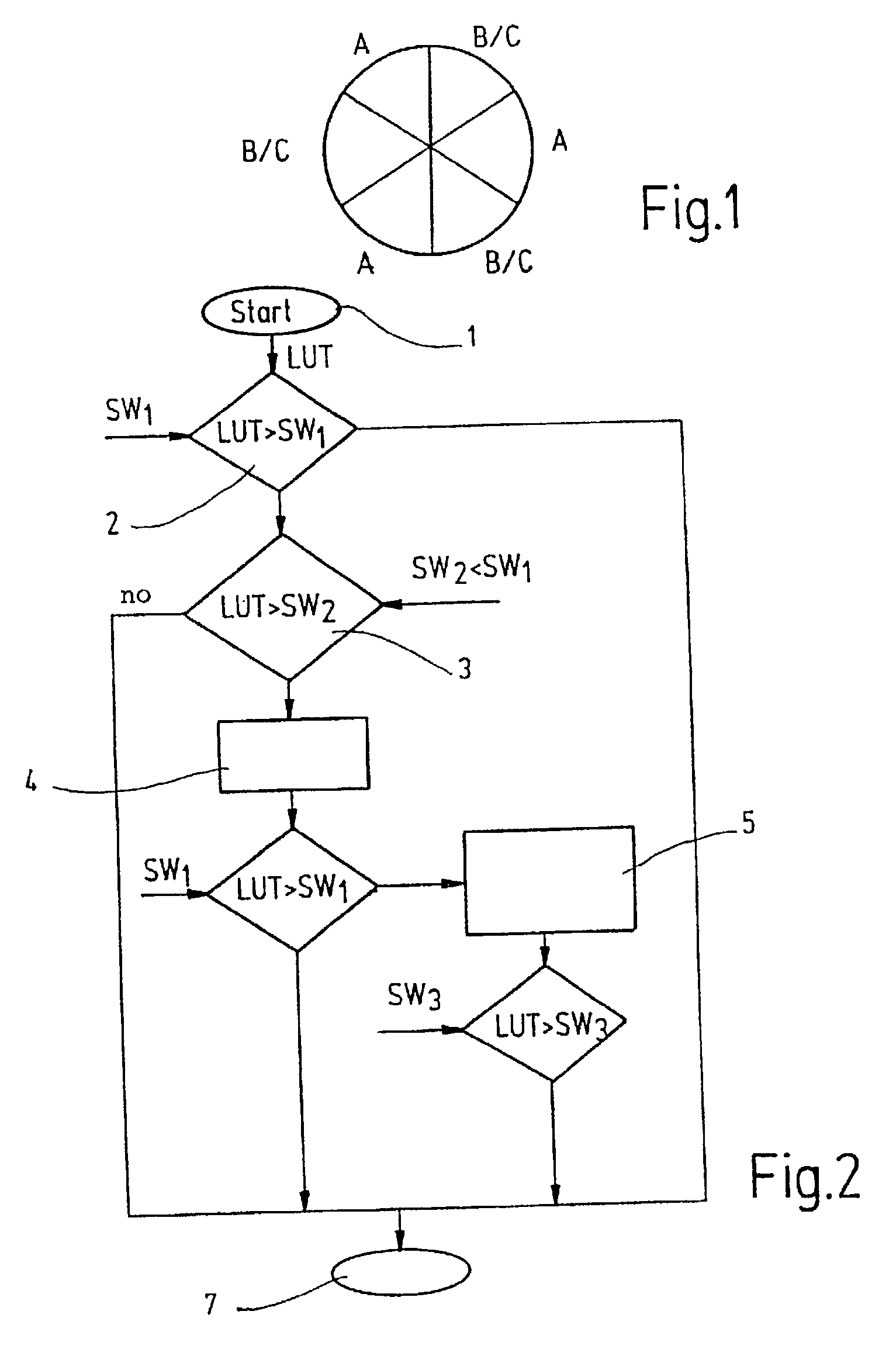Method for engine misfire detection in multi-cylinder internal combustion engines with multi-cylinder spark ignition
a multi-cylinder, spark ignition technology, applied in the direction of machines/engines, electric control, instruments, etc., can solve the problems of deterioration of exhaust gas values, inability to detect, and drop in torque caused by deterioration, so as to prevent the injection of the affected cylinder and reliable detection
- Summary
- Abstract
- Description
- Claims
- Application Information
AI Technical Summary
Benefits of technology
Problems solved by technology
Method used
Image
Examples
Embodiment Construction
[0014] The method of the invention can, for example, be applied to an 18-cylinder engine. The engine is comprised of three cylinder banks A, B and C. A crankshaft revolution of 360 degrees is shown in FIG. 1 subdivided into six crankshaft segments. A total of six ignitions takes place in different cylinders of the engine during a crankshaft revolution. The cylinders of the cylinder bank A ignite individually; whereas, respective cylinders of cylinder banks B and C have a common ignition time point. The ignition sequence for a crankshaft revolution shown in FIG. 1 can be defined exemplary as follows:
[0015] 1st ignition operation: cylinder 1 of bank A;
[0016] 2nd ignition operation: cylinder 1 of bank B simultaneously with cylinder 1 of bank C;
[0017] 3rd ignition operation: cylinder 2 of bank A;
[0018] 4th ignition operation: cylinder 2 of bank B simultaneously with cylinder 2 of bank C;
[0019] 5th ignition operation: cylinder 3 of bank A; and,
[0020] 6th ignition operation: cylinder 3 of...
PUM
 Login to View More
Login to View More Abstract
Description
Claims
Application Information
 Login to View More
Login to View More - R&D
- Intellectual Property
- Life Sciences
- Materials
- Tech Scout
- Unparalleled Data Quality
- Higher Quality Content
- 60% Fewer Hallucinations
Browse by: Latest US Patents, China's latest patents, Technical Efficacy Thesaurus, Application Domain, Technology Topic, Popular Technical Reports.
© 2025 PatSnap. All rights reserved.Legal|Privacy policy|Modern Slavery Act Transparency Statement|Sitemap|About US| Contact US: help@patsnap.com


